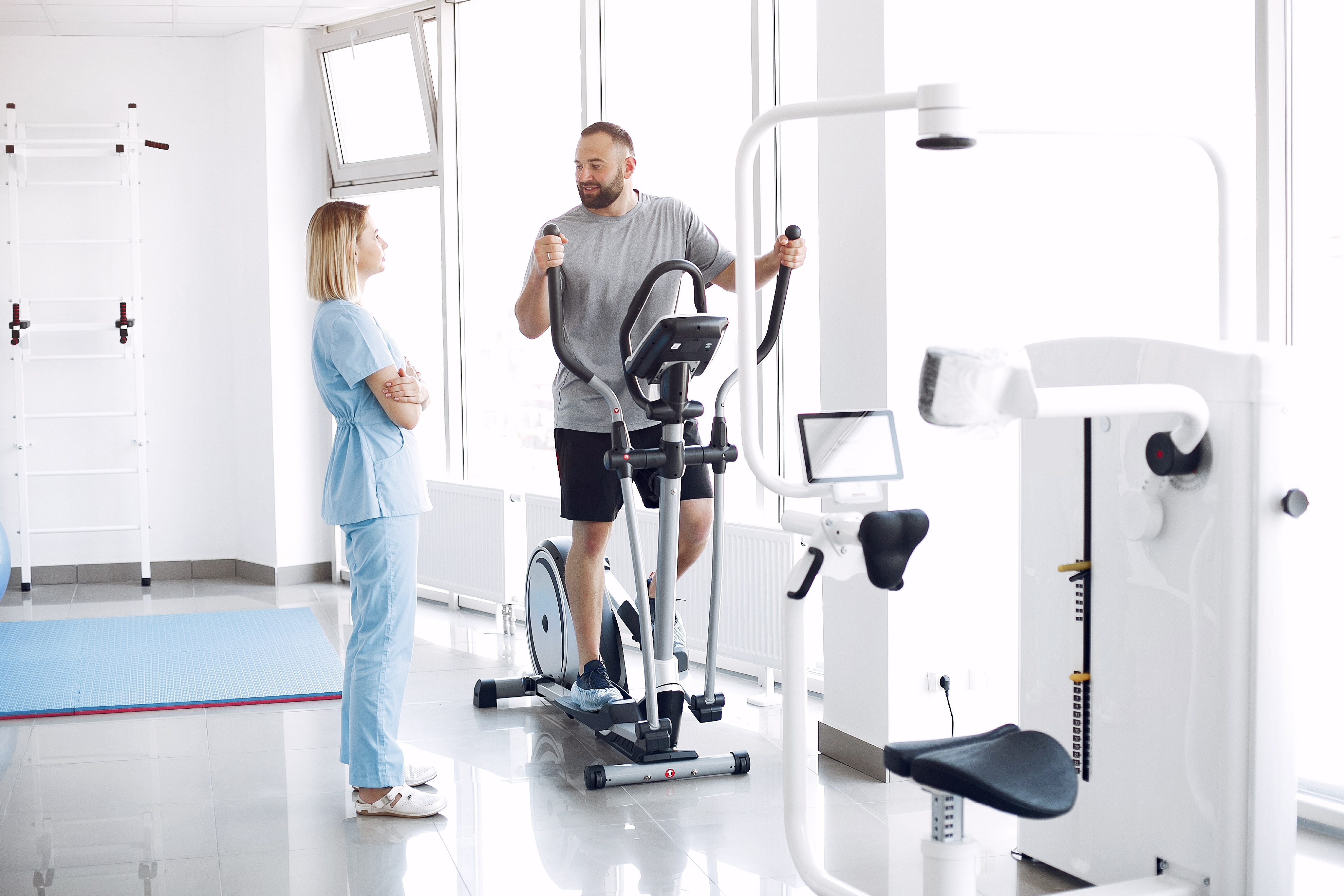Understanding Stomach Pumping
Stomach pumping, also known as gastric lavage, is a medical procedure that involves the removal of stomach contents through a tube inserted into the stomach. This procedure is typically performed in emergency situations to address certain medical conditions or instances of ingestion of toxins or poisons.
What is Stomach Pumping?
Stomach pumping, or gastric lavage, is a procedure used to empty the stomach contents. It involves the insertion of a tube through the mouth or nose, down the esophagus, and into the stomach. Once the tube is in place, the stomach contents, such as food, medications, or harmful substances, can be suctioned out.
The purpose of stomach pumping is to quickly remove substances from the stomach that may be causing harm or posing a risk to the individual's health. By emptying the stomach, medical professionals can prevent further absorption of toxins or reduce the effects of an overdose.
Reasons for Stomach Pumping
Stomach pumping is typically performed in the following situations:
- Overdose Situations: In cases of drug overdoses, stomach pumping may be necessary to remove any remaining drugs from the stomach. By doing so, the amount of the drug available for absorption into the bloodstream is reduced, potentially preventing further harm.
- Poison Ingestion Incidents: When someone ingests a toxic substance, stomach pumping can help remove the poison before it is absorbed into the body. This can be particularly beneficial if the ingestion occurred recently and the substance is still in the stomach.
It's important to note that stomach pumping is a medical procedure that should only be performed by trained healthcare professionals in appropriate situations. The decision to perform stomach pumping is based on a careful assessment of the individual's condition and the potential risks and benefits of the procedure.
The Process of Stomach Pumping
Stomach pumping, also known as gastric lavage, is a medical procedure performed to remove the contents of the stomach. This procedure is typically done in emergency situations where there is a need to eliminate toxins or foreign substances from the stomach. Understanding the process of stomach pumping can provide insight into how it is carried out.
Preparation for the Procedure
Before performing stomach pumping, certain preparations are undertaken to ensure the safety and effectiveness of the procedure. These preparations may include:
- Patient Evaluation: The healthcare provider assesses the patient's condition, medical history, and reason for stomach pumping. This evaluation helps determine the necessity and appropriateness of the procedure.
- Informed Consent: The healthcare provider explains the purpose, risks, benefits, and alternative treatments of stomach pumping to the patient or their legal guardian. Informed consent is obtained before proceeding with the procedure.
- Monitoring and Support: Vital signs such as heart rate, blood pressure, and oxygen levels are monitored to ensure the patient's stability during the procedure. Intravenous fluids and medications may be administered if necessary.
- Nasogastric Tube Placement: A thin, flexible tube called a nasogastric tube is inserted through the nose or mouth and guided into the stomach. This tube serves as the pathway for the removal of stomach contents.
Administration of the Pumping
Once the necessary preparations have been completed, the stomach pumping procedure can commence. The steps involved in administering the pumping are as follows:
- Fluid Intake: Prior to initiating the pumping process, a specific fluid is introduced into the stomach through the nasogastric tube. This fluid, typically saline solution, helps to dilute and facilitate the removal of stomach contents.
- Aspiration of Stomach Contents: A suction device is connected to the nasogastric tube, creating a negative pressure that allows for the withdrawal of stomach contents. The healthcare provider carefully monitors and controls the amount and rate at which the contents are removed.
- Repeat Cycles: The process of introducing fluid and aspirating stomach contents is repeated until the desired outcome is achieved. The number of cycles may vary depending on the specific situation and the healthcare provider's judgment.
Throughout the procedure, the healthcare team maintains strict adherence to infection control measures and ensures the comfort and safety of the patient. This includes providing appropriate pain management and closely monitoring the patient's response.
Understanding the preparation and administration involved in stomach pumping allows individuals to grasp the technical aspects of the procedure. However, it's important to note that stomach pumping should only be performed by trained medical professionals in emergency situations and under appropriate circumstances.
Effects of Stomach Pumping
Stomach pumping, also known as gastric lavage, is a medical procedure that involves the removal of substances from the stomach. This procedure can have various effects on the body, including the removal of toxins and potential risks and complications.
Removal of Toxins
One of the primary purposes of stomach pumping is to remove toxins or harmful substances from the stomach. In cases of drug overdose or poison ingestion, stomach pumping can help prevent the absorption of these substances into the bloodstream. By removing the contents of the stomach, the body has a chance to eliminate the toxins before they can cause further harm.
It's important to note that stomach pumping is typically performed within a specific time frame after ingestion to be most effective. The procedure aims to remove as much of the ingested substance as possible before it is fully absorbed into the body. The effectiveness of stomach pumping in removing toxins depends on various factors such as the type of substance, the amount ingested, and how quickly medical intervention is sought.
Potential Risks and Complications
While stomach pumping can be a life-saving procedure, it is not without risks and potential complications. These risks can vary depending on the individual's overall health, the reason for the procedure, and the skill of the medical professionals performing it.
Some potential risks and complications associated with stomach pumping include:
- Perforation or injury to the esophagus, stomach, or other nearby organs.
- Aspiration of stomach contents (inhalation of stomach contents into the lungs), which can lead to pneumonia or other respiratory complications.
- Vomiting during the procedure, which can lead to the aspiration of stomach contents or blockage of the airway.
- Disruption of electrolyte balance or fluid imbalance due to the removal of stomach contents.
It's essential for medical professionals to carefully assess the risks and benefits of stomach pumping for each individual case and take necessary precautions to minimize complications.
In summary, stomach pumping can effectively remove toxins or harmful substances from the stomach, potentially preventing further absorption into the body. However, it is not without risks and potential complications. The decision to perform stomach pumping is typically made by medical professionals based on the specific circumstances and the potential benefits outweighing the risks.
Recovery After Stomach Pumping
After undergoing stomach pumping, proper recovery and follow-up care are essential to ensure the patient's well-being. This section will explore the monitoring and observation process as well as the necessary follow-up care after the stomach pumping procedure.
Monitoring and Observation
Following stomach pumping, patients are closely monitored to assess their condition and ensure a smooth recovery. Medical professionals will keep a vigilant eye on vital signs, such as heart rate, blood pressure, and oxygen levels. Regular monitoring allows them to detect any potential complications or adverse reactions that may arise.
Observation typically takes place in a medical facility, such as a hospital or emergency room. The duration of observation may vary depending on the reason for stomach pumping and the patient's individual circumstances. In some cases, patients may be discharged once their condition stabilizes, while others may require a longer period of observation to ensure their safety.
During the monitoring and observation phase, healthcare providers may perform additional tests or evaluations to assess the patient's overall health and address any complications that may arise. This may include blood tests, imaging studies, or consultations with specialists.
Follow-up Care
After undergoing stomach pumping, follow-up care is crucial to support the patient's recovery and prevent any potential complications. The specific follow-up care may vary depending on the underlying reason for the procedure and the patient's individual needs. Here are some general aspects of follow-up care:
- Medication and Treatment: The healthcare provider may prescribe medications or treatments to address the underlying condition that led to stomach pumping. It is important for patients to adhere to the prescribed regimen and follow any instructions provided by the healthcare team.
- Dietary Recommendations: Patients may receive dietary recommendations to facilitate their recovery. This may include guidance on the types of foods to consume or avoid, as well as advice on maintaining proper hydration and nutrition.
- Lifestyle Modifications: Depending on the underlying cause, patients may be advised to make certain lifestyle modifications to prevent a recurrence. This may include changes in habits, such as avoiding substance abuse or adopting healthier eating patterns.
- Follow-up Appointments: Healthcare providers may schedule follow-up appointments to assess the patient's progress and address any concerns or questions that may arise during the recovery period. These appointments provide an opportunity for ongoing evaluation and support.
It is essential for patients to actively participate in their recovery by following the prescribed treatment plan, attending follow-up appointments, and seeking medical assistance if any new symptoms or complications arise. By doing so, patients can optimize their recovery and minimize the risk of future incidents.
Recovering from stomach pumping involves a comprehensive approach that includes close monitoring, appropriate follow-up care, and patient engagement. Through diligent observation and appropriate post-procedure care, patients can increase the likelihood of a successful recovery and minimize any potential complications.
When is Stomach Pumping Necessary?
Stomach pumping, also known as gastric lavage, is a medical procedure performed in specific situations where it is necessary to remove the contents from the stomach. It is typically done in cases of overdose situations and poison ingestion incidents. Let's explore these situations in more detail.
Overdose Situations
In cases of drug or medication overdose, stomach pumping is often considered as a treatment option. When a person overdoses, there is a risk of the substance being absorbed into the bloodstream and causing severe harm. Stomach pumping helps to remove the toxic substances from the stomach before they can be fully absorbed, reducing the potential harm caused.
It's important to note that stomach pumping is not the only treatment for overdose situations. In many cases, it is performed in combination with other medical interventions, such as administering activated charcoal or providing supportive care.
Poison Ingestion Incidents
When someone ingests a poisonous substance, whether accidentally or intentionally, stomach pumping may be necessary to remove the toxin from the stomach and prevent further absorption into the body. Poison ingestion incidents can occur in various settings, including households, workplaces, and outdoor environments.
Prompt medical attention is crucial in poison ingestion incidents. If there is a suspicion of poisoning, contacting a poison control center or seeking immediate medical help is essential. Stomach pumping may be performed as part of the comprehensive treatment plan, depending on the specific poison ingested and the time elapsed since ingestion.
It's important to remember that stomach pumping should only be performed by trained medical professionals in appropriate medical settings. The decision to perform stomach pumping is made on a case-by-case basis, considering the individual's condition, the substance ingested, and other relevant factors. Proper medical evaluation and intervention are vital to ensure the best possible outcome in these situations.
Understanding Stomach Pumping
Stomach pumping, also known as gastric lavage, is a medical procedure that involves the removal of contents from the stomach using a tube inserted through the mouth or nose. This procedure is typically performed in emergency situations to address certain conditions or situations where immediate intervention is necessary.
What is Stomach Pumping?
Stomach pumping is a procedure that allows healthcare professionals to empty the stomach contents using suction. By inserting a tube into the stomach, the unwanted substances, such as toxins, drugs, or poisons, can be expelled from the body. Stomach pumping is a controlled medical process conducted under the supervision of trained professionals in a hospital or emergency setting.
Reasons for Stomach Pumping
Stomach pumping is primarily performed in two main scenarios: overdose situations and poison ingestion incidents.
In cases of drug overdose, stomach pumping can be utilized to remove the ingested substances before they are fully absorbed into the bloodstream. This can help prevent further complications and potentially save a person's life.
Similarly, if someone has ingested a toxic substance or poison, stomach pumping can aid in removing the harmful substance from the stomach, reducing the risk of absorption and minimizing potential damage to the body.
Sources
https://www.stepstorecovery.com/what-happens-when-you-get-your-stomach-pumped
https://www.brighterdaymh.com/stomach-pumping-side-effects
https://my.clevelandclinic.org/health/treatments/stomach-pumping
https://www.doverecovery.com/happens-when-stomach-pumped

.jpg)
.png)
.png)


.png)
.png)
.png)
.png)



